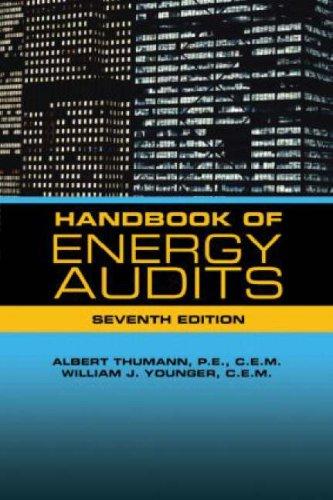Question
Situation Parent, Inc. is contemplating a tender offer to acquire 80 percent of Subsidiary Corporation's common stock. Subsidiary's shares are currently quoted on the New
Situation
Parent, Inc. is contemplating a tender offer to acquire 80 percent of Subsidiary Corporation's common stock. Subsidiary's shares are currently quoted on the New York Stock Exchange at $100 per share. Parent is going to offer $105 per share to execute the tender offer. If the tender offer is made and is successful, the purchase will be consummated on January 1, 2001.
A typical part of planning a proposed business combination is the preparation of projected or pro forma consolidated financial statements. As a member of Parent's accounting group, you have been asked to prepare the pro forma 2001 consolidated financial statements for Parent and Subsidiary assuming that 80 percent of Subsidiary's stock is acquired at a price of $105 per share. To support your computations, Martha Franklin, the chairperson of Parent's acquisitions committee, has provided you with the projected 2001 financial statements for Subsidiary. (The projected financial statements for Subsidiary and several other companies were prepared earlier for the acquisition committee's use in targeting a company for acquisition.) The projected financial statements for Subsidiary for 2001 and Parent's actual 2000 financial statements are presented in table 1.
Assumptions
Ms. Franklin has asked you to use the following assumptions to project Parent's 2001 financial statements: Sales will increase by 10 percent in 2001 and all sales will be on account. Accounts receivable will be 5 percent lower on December 31, 2001, than on December 31, 2000. Cost of goods sold will increase by 9 percent in 2001. All purchases of merchandise will be on account. Accounts payable are expected to be $50,500 on December 31, 2001. Inventory will be 3 percent higher on December 31, 2001, than on December 31, 2000. Straight-line depreciation is used for all fixed assets. No fixed assets will be disposed of during 2001. The annual depreciation expense on existing assets is $40,000 per year. Equipment will be purchased on January 1, 2001, for $48,000 cash. The equipment will have an estimated life of 10 years with no salvage value. Other operating expenses (depreciation is discussed above) will increase by 14 percent in 2001 and all will be paid in cash. Parent's income tax rate is 40 percent and taxes are paid in cash in four equal payments. Payments will be made on the 15th of April, June, September, and December. For simplicity, assume taxable income equals financial reporting income before taxes. Parent will continue the $2.50 per share annual cash dividend on its common stock. If the tender offer is successful, Parent will finance the acquisition by issuing $170,000 of 6 percent non-convertible bonds at par on January 1, 2001. The bonds would first pay interest on July 1, 2001, and would pay interest semi-annually thereafter each January 1 and July 1 until maturity on January 1, 20Y1. (Note: This is a 10-year bond) The acquisition will be properly accounted for as an acquisition (SFAS 141R) and Parent will account for the investment using the equity method. Although most of the legal work related to the acquisition will be handled by Parent's staff attorney, direct costs to prepare and process the tender offer will total $2,000 and will be paid in cash by Parent in 2001.
Additional Information
As of January 1, 2001, all of Subsidiary's assets and liabilities are fairly valued except for machinery with a book value of $8,000, an estimated fair value of $9,500, and a 5-year remaining useful life. Assume that straight-line depreciation is used to amortize any revaluation increment.
No transactions between these companies occurred prior to 2001. Regardless of whether they combine, Parent plans to buy $50,000 of merchandise from Subsidiary in 2001 and will have $3,600 of these purchases remaining in inventory on December 31, 2001. In addition, Subsidiary is expected to buy $2,400 of merchandise from Parent in 2001 and to have $495 of these purchases in inventory on December 31, 2001. Parent and Subsidiary price their products to yield a 65 percent and 80 percent markup on cost, respectively.
Parent intends to use three financial yardsticks to determine the financial attractiveness of the acquisition. First, Parent wishes to acquire Subsidiary Corporation only if 2001 consolidated earnings per share will be at least as high as the earnings per share Parent would report if no acquisition takes place. Second, Parent will consider the proposed acquisition unattractive if it will cause the consolidated current ratio to fall below 2 to 1. Third, return on average stockholders' equity must remain above 20 percent for the consolidated entity.
If the financial yardsticks described above and the non-financial aspects of the acquisition are appealing, then the tender offer will be made. On the other hand, if these objectives are not met, the acquisition will either be restructured or abandoned.
Required
3. Prepare a pro forma consolidation worksheet. Prepare a pro forma consolidation worksheet for Parent, Inc. and its proposed subsidiary as of December 31, 2001. Use the adjusted pro forma 2001 financial statements of Parent, Inc. prepared in #2 and the projected 2001 financial statements of Subsidiary Corporation in table 1. Show all consolidation adjusting entries including non-controlling interest (NCI) entries.
Table 1: 
S entry:
A entry:
I entry:
D entry:
E entry:
TI entry:
G entry:
Step by Step Solution
There are 3 Steps involved in it
Step: 1

Get Instant Access to Expert-Tailored Solutions
See step-by-step solutions with expert insights and AI powered tools for academic success
Step: 2

Step: 3

Ace Your Homework with AI
Get the answers you need in no time with our AI-driven, step-by-step assistance
Get Started


